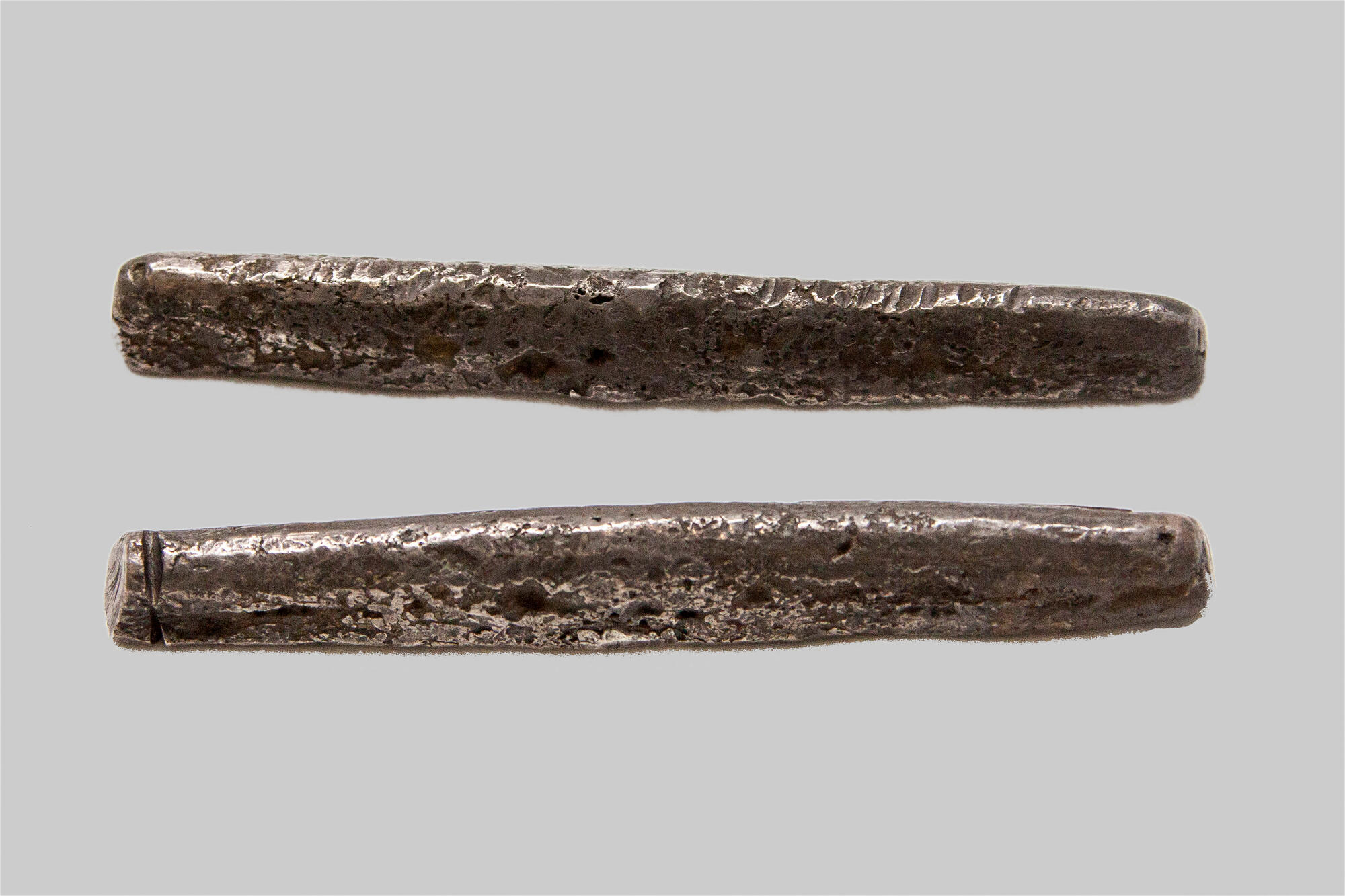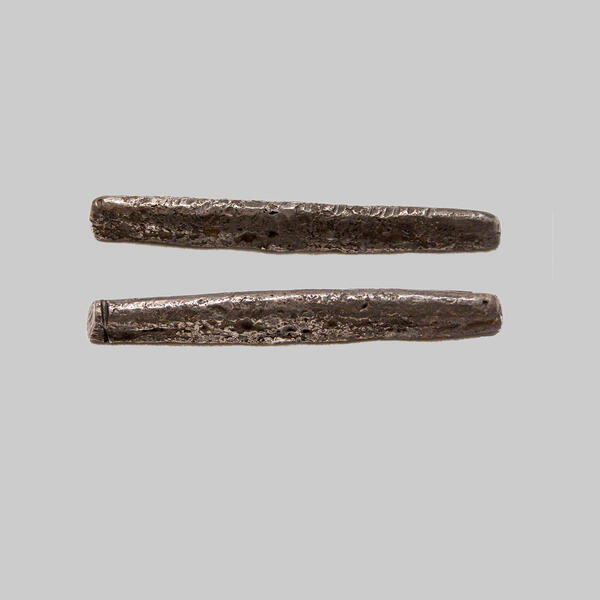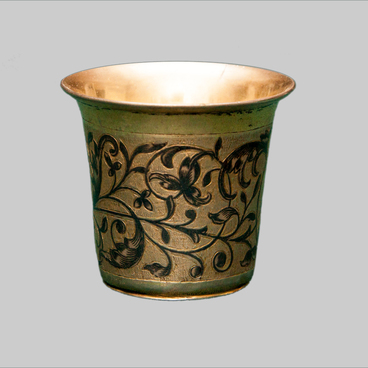A grivna presented in the exhibition is part of a treasure received by the Tobolsk Museum at the end of the 19th century. Grivna was an elongated silver bar in the form of a three-sided stick, which is slightly narrowing down to the ends. Such monetary weight units were used on the territory of Ancient Russia.
A peasant woman Akulina Polynskaya found these bars on June 29, 1893 in the village of Terekhova in the Tarsky district. She was fencing off the cows to graze in a meadow, and on the way down, she noticed a metal shaft sticking out of the ground in the ravine on the slope of the mountain. By pulling it, she pulled out two silver cups without handles, stacked one into the other. There were two silver pots with handles on top of them, which were also stacked one in the other and lay upside down. In the upper cup, without a handle, the peasant woman found twenty Golden Horde coins and two silver bars wrapped in birch bark. The woman reported her discovery to the Loginovsky volost board. Through the Tarsky district police officer and the Tobolsk Governor, the products were sent to the Tobolsk Museum, and a note about this discovery was published in the ‘Pravitelstvenny vestnik’ (Government Bulletin) in November 1893.
The Imperial Archaeological Commission (IAC) did not allow to publish this note and sent a letter to the Tobolsk Governor, which was signed by the Chairman, Lord Chamberlain of the Household of his Majesty, member of the State Council, count Alexey Bobrinsky. In this letter, the Commission asked to send the items kept in the Museum. Later, she handed over the silver cups to the Imperial Hermitage and the Russian Historical Museum, and sent two silver bars and 20 Golden Horde coins back to the Tobolsk Museum. The Imperial Archaeological Commission transferred 100 roubles to the peasant woman who found the items. For comparison, at the end of the 19th century, a worker received a salary of 29 roubles.
It was not only the capital that became interested in the discovery. The Imperial Moscow Archaeological Society on behalf of the scientist and archaeologist Countess Praskovya Uvarova, also sent a letter to the Tobolsk Museum, in which it asked to grant the society photos from objects and provide more detailed information about the treasure.
A peasant woman Akulina Polynskaya found these bars on June 29, 1893 in the village of Terekhova in the Tarsky district. She was fencing off the cows to graze in a meadow, and on the way down, she noticed a metal shaft sticking out of the ground in the ravine on the slope of the mountain. By pulling it, she pulled out two silver cups without handles, stacked one into the other. There were two silver pots with handles on top of them, which were also stacked one in the other and lay upside down. In the upper cup, without a handle, the peasant woman found twenty Golden Horde coins and two silver bars wrapped in birch bark. The woman reported her discovery to the Loginovsky volost board. Through the Tarsky district police officer and the Tobolsk Governor, the products were sent to the Tobolsk Museum, and a note about this discovery was published in the ‘Pravitelstvenny vestnik’ (Government Bulletin) in November 1893.
The Imperial Archaeological Commission (IAC) did not allow to publish this note and sent a letter to the Tobolsk Governor, which was signed by the Chairman, Lord Chamberlain of the Household of his Majesty, member of the State Council, count Alexey Bobrinsky. In this letter, the Commission asked to send the items kept in the Museum. Later, she handed over the silver cups to the Imperial Hermitage and the Russian Historical Museum, and sent two silver bars and 20 Golden Horde coins back to the Tobolsk Museum. The Imperial Archaeological Commission transferred 100 roubles to the peasant woman who found the items. For comparison, at the end of the 19th century, a worker received a salary of 29 roubles.
It was not only the capital that became interested in the discovery. The Imperial Moscow Archaeological Society on behalf of the scientist and archaeologist Countess Praskovya Uvarova, also sent a letter to the Tobolsk Museum, in which it asked to grant the society photos from objects and provide more detailed information about the treasure.



